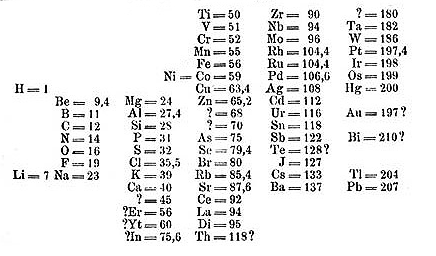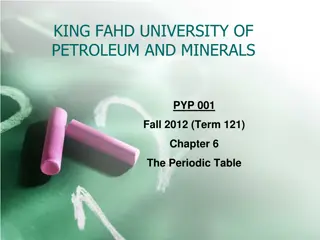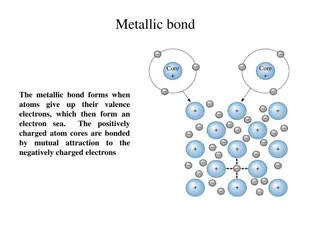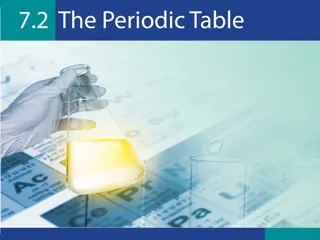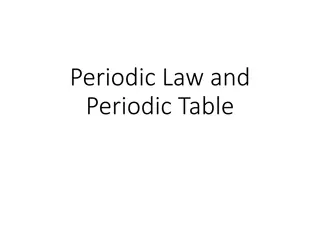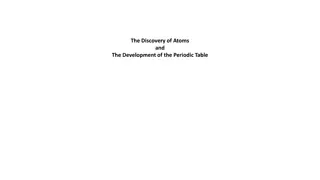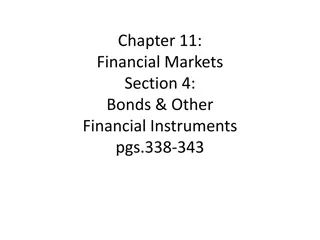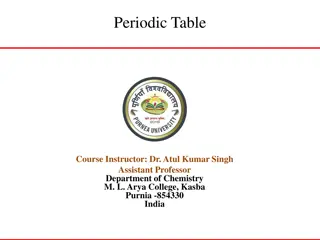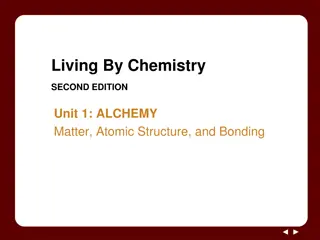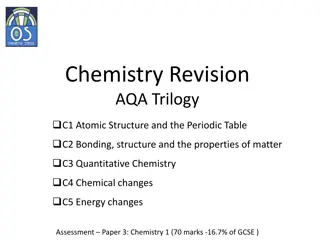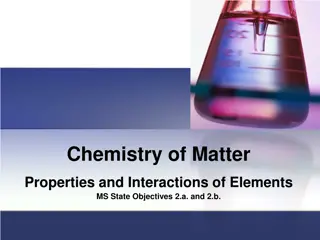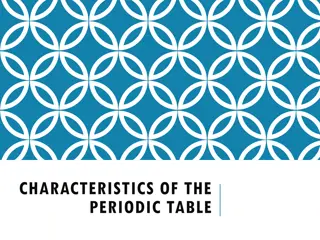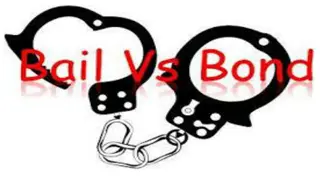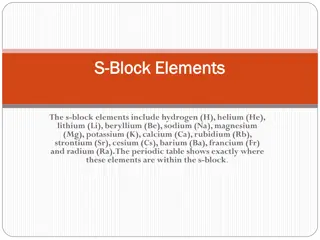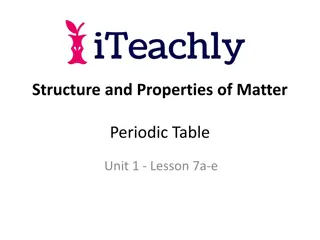Understanding the Periodic Table and Chemical Bonds in Physical Science
The periodic table organizes elements based on their properties, with rows representing periods and columns representing groups. Mendeleev's early table laid the foundation for predicting undiscovered elements. Today's periodic table orders elements by atomic number, showcasing the periodic law and classifying elements into metals, nonmetals, and metalloids based on their characteristics and properties. Valence electrons play a crucial role in chemical reactions, with elements in the same group sharing similar properties due to their common number of valence electrons.
Download Presentation

Please find below an Image/Link to download the presentation.
The content on the website is provided AS IS for your information and personal use only. It may not be sold, licensed, or shared on other websites without obtaining consent from the author. Download presentation by click this link. If you encounter any issues during the download, it is possible that the publisher has removed the file from their server.
E N D
Presentation Transcript
Physical Science Unit 5 Crash Course Chapter 5 and 6 (The Periodic Table and Chemical Bonds)
Chapter 5 The Periodic Table A periodic table is an arrangement of elements in columns, based on a set of properties that repeat from row to row. Mendeleev arranged the elements into rows in order of increasing mass so that elements with similar properties were in the same column. He used the properties of elements located near the blank spaces in his table to predict properties for undiscovered elements. The close matches between Mendeleev s predictions and the actual properties of new elements showed how useful his periodic table could be.
Chapter 5 The Periodic Table In the modern periodic table, elements are arranged by increasing atomic number (number of protons). Each row in the table of elements is a period. The number of elements per period varies because the maximum number of electrons increases from energy level to energy level. Each column on the periodic table is called a group. The elements within a group have similar properties.
Chapter 5 The Periodic Table The pattern of repeating properties across a period when the elements are arranged in order of increasing atomic number is called the periodic law. Atomic mass is a value that depends on the distribution of an element s isotopes in nature and the masses of those isotopes. Elements are classified as metals, nonmetals, and metalloids.
Chapter 5 The Periodic Table The majority of the elements on the periodic table are classified as metals. Metals are elements that are shiny, good conductors of electric current and heat, solid at room temperature (except mercury), malleable, and ductile (they can be drawn into wires). Nonmetals are elements that are poor conductors of heat and electric current, have low boiling points, are brittle, and tend to be gases.
Chapter 5 The Periodic Table Metalloids are elements with properties that fall between those of metals and nonmetals. Across a period from left to right, the elements become less metallic and more nonmetallic in their properties. A valence electron is an electron that is in the highest occupied energy level of an atom. These electrons play a key role in chemical reactions. Elements in a group have similar properties because they have the same number of valence electrons.
Chapter 5 The Periodic Table Reactivity increases to the left in a row across the metals and increases down in a group of the metals. Reactivity increases to the right in a row across the nonmetals (except the noble gases are unreactive) and decreases down a group in the nonmetals.
Chapter 6 Chemical Bonding When the highest occupied energy level of an atom is filled with electrons, the atom is stable and not likely to react. The noble gases have stable electron configurations with eight valence electrons (or two in the case of helium). Some elements achieve stable electron configurations through the transfer of electrons between atoms. An atom that has a net positive or negative charge is called an ion.
Chapter 6 Chemical Bonding When an ionic bond is formed, electrons are transferred until each atom has a full outer energy level. Ionic compounds tend to have high melting points (above 300oC). Ionic compounds are poor conductors in the solid state, but they can conduct heat or electricity when they are melted. Ionic compounds are brittle, so they shatter when struck by a hammer. The properties of ionic compounds can be explained by the strong attractions among ions within a crystal lattice.
Chapter 6 Chemical Bonding A covalent bond is a chemical bond in which two atoms share a pair of valence electrons. Many nonmetal elements exist as diatomic molecules. Diatomic means two atoms. They are H2, N2, O2,F2, Cl2, Br2, and I2.
Chapter 6 Chemical Bonding When naming an ionic compound the name of the metal (cation) does not change and the name of the nonmetal (anion) has the suffix ide. Ex. MgBr2= magnesium bromide To balance the charges in an ionic compound, you can cross the charges if they are not the same.
Chapter 6 Chemical Bonding Molecular compounds only contain nonmetals. The name of the first element is the same. The name of the second element ends in the suffix -ide. Prefixes tell the number of atoms of each element. A prefix is not used when the first element only has 1 atom. Ex. CO2= carbon dioxide 1 = mono 6 = hexa 2 = di 7 = hepta 3 = tri 8 = octa 4 = tetra 9 = nona 5 = penta 10 = deca
Chapter 6 Chemical Bonding Write the symbols for the elements in the order the elements appear in the name. The prefixes indicate the number of atoms of each element in this molecule. Ex: diphosphorus pentoxide = P2O5
Chapter 6 Chemical Bonding In a metal, valence electrons are free to move among the atoms, so the cations are surrounded by a sea of electrons. The more valence electrons an atom can contribute to the shared pool, the stronger the metallic bond will be. The mobility of electrons within a metal lattice explains the fact that metals are good conductors and malleable. An alloy is a mixture of two or more elements that have metallic properties.
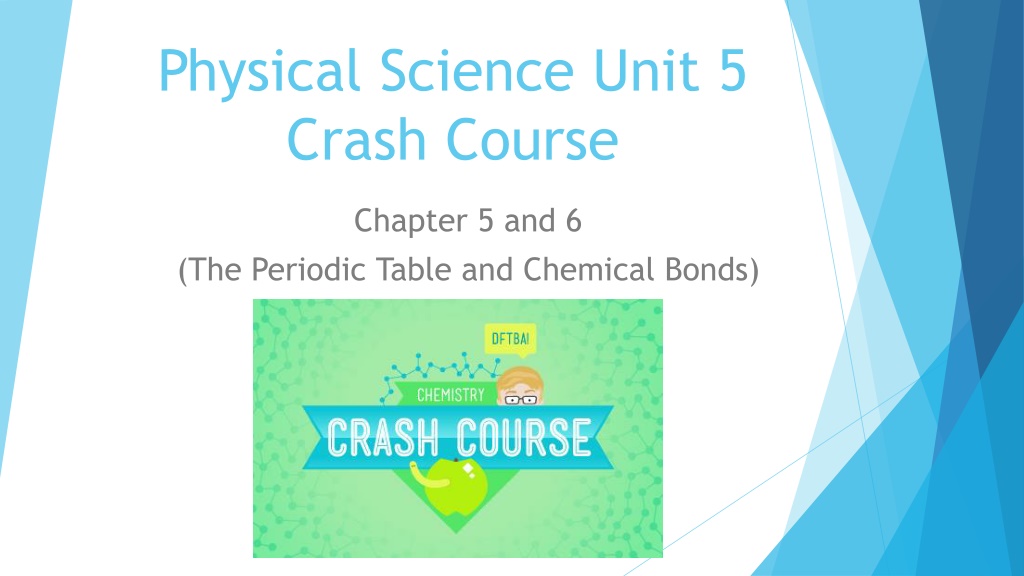
 undefined
undefined



